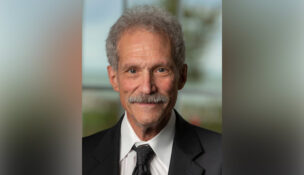Mind the witness gaps, Part II
By: DOLAN MEDIA NEWSWIRES//September 17, 2013//
By Daniel Small
Dolan Media Newswires
As noted in my previous column, there are enormous gaps between a witness’s real-world experiences and those in the strange world of being a witness.
I looked at the first two gaps — perception and audience — that shape how witnesses view their roles. Now, I’ll examine the last two gaps, conversation and control, which affect how witnesses respond.
The conversation gap
The problem:
Witness: “I’ll just go talk to them!”
Lawyer: “Question. Pause. Answer. Stop!”
We pride ourselves on a familiar form of communication that’s informal and fun — namely, conversation. Casual, interesting and free-flowing, good conversation is an integral part of our day, our relationships and even our self-esteem.
There’s a wonderful quotation from Guy de Maupassant, a 19th century French writer, who described conversation as “the art of never seeming wearisome, of knowing how to invest every trifle with interest, to charm no matter what be the subject, and to fascinate with absolutely nothing.”
All of us would love to be so graceful.
Yet consider the gap between that and being a witness. Conversation is casual because the setting is informal. What if it were all under oath? Conversation is interesting because we can be open and creative. What if every word were being transcribed? Conversation is free-flowing because we feel free to say whatever we want. What if every word, once transcribed, were to be picked apart and used against us or others in the future? That’s not a conversation!
I give a copy of the Maupassant quote to virtually every witness I work with, because all the wonderful qualities he found in a conversation are inappropriate for a witness. If conversation is an art, being a witness is a science. If the goal in conversation is to be interesting, the goal of a witness is to be precise.
A witness is not there to entertain, just to tell “nothing but the truth” in a clear, simple way. If doing that feels boring or uncomfortable, that’s far better than being charming but in trouble because you said too much.
A good conversation “flows” along well, and a good conversationalist is someone who listens to where it’s going and helps it get there.
Good testimony, alas, does not flow. It’s very awkward and stop-and-start: Question. Pause. Answer. Stop. Then start all over again.
A good listener as a witness is not someone who focuses on what the questioner meant or where he is going, but only on the words that come out of his mouth — in other words, the words the court reporter hears.
Several years ago, the TV series “The West Wing” had a string of episodes about a scandal in the White House. News had broken that the president had multiple sclerosis, and an investigation was launched into whether top aides broke the law in initially covering up the diagnosis.
The president’s press secretary, C.J., was subpoenaed to testify and called to meet with the White House counsel to prepare. C.J., an intelligent and talkative character, was clearly nervous and angry about the situation — both being called as a witness and having to meet with counsel. She took it out on counsel by being sarcastic, uncooperative and not eager to take advice. Counsel tried to make her understand the need to prepare, but in the middle of talking about what happened, he stopped. To paraphrase:
Counsel: Do you know what time it is?
C.J.: It’s 5 past noon.
Counsel: I’d like you to get out of the habit of doing that!
C.J.: Doing what?
Counsel: Answering more than was asked!
(Pause)
Counsel: Do you know what time it is?
(Long pause)
C.J.: Yes.
Counsel: Now we’re making progress. We’ll take a break and meet again later today.
If you teach your witness nothing else, teach him the answer to the question, “Do you know what time it is?” The answer is the difference between a conversation and testimony.
In a conversation, questions are not really questions; they’re prompts, a means of moving the conversation in a particular direction. It’s rare that anyone is really looking for the precise answer or will be offended if he doesn’t get it.
In a conversation, the answer “yes,” while precisely accurate, is a bad one. It’s not what the questioner is seeking. That’s not where the conversation is flowing. In a testimony environment, however, the question is important, and “yes” is the right answer.
That’s the core difference between a normal conversation and a testimony environment.
The control gap
Problem:
Witness: “It’s their deposition. I just have to sit here and take it.”
Lawyer: “Why is he letting this questioner walk all over him?
Even to highly accomplished individuals who are well accustomed to being in command of every situation, the witness chair gives all the appearances of the questioner being in control. It’s that person’s subpoena, his case, his arena, his life’s work.
The questioner walks in with a list — written or in his head — of questions designed to trip up the witness, and a variety of battle-tested follow-up techniques if the prepared questions don’t work. It seems obvious who’s in control.
However, if the witness, or the witness’s counsel, buys into that deception, he puts himself at a terrible disadvantage. What both lawyer and client need to understand is that all that impressive stuff is just that: stuff, designed to get the witness’s testimony. The witness is the only one under oath, so he has the right and the responsibility to control his own testimony.
Controlling the testimony includes controlling the pace (slow and careful); the rhythm (question, pause, answer, stop); and the language of both question and answer (if not 100-percent clear, don’t answer). A witness cannot tell the truth as he knows it unless he’s in control.
Control, in this circumstance, does not mean emotion or volume. Most witnesses have plenty of experience with other forms of interaction with strangers — meetings, conference calls, etc. Those interactions are rarely controlled by who shouts the loudest. They are controlled by a set of rules, stated or understood, of professionalism and courtesy.
The same applies here. The witness is there to answer questions, but the questions and answers must be clear, simple and fair. It’s up to the witness to impose the discipline.
Counsel needs to help witnesses understand such a deceptive environment.
Daniel Small is a partner in the Boston and Miami offices of Holland & Knight. A former federal prosecutor, he is the author of the American Bar Association’s “Preparing Witnesses.” He can be contacted at [email protected].
Legal News
- Some State Bar diversity participants walk away from program
- Wisconsin court issues arrest warrant ‘in error’ for Minocqua Brewing owner
- Iranian nationals charged cyber campaign targeting U.S. Companies
- Facing mostly white juries, are Milwaukee County defendants of color truly judged by their peers?
- Milwaukee Mayor speaks in D.C. Tuesday at White House water summit
- Chicago man sentenced to prison after being caught with ‘Trump Gun’
- FTC bans non-competes
- Gov. Evers seeks applicants for Dane County Circuit Court
- Milwaukee man charged in dismemberment death pleads not guilty
- Democratic-led states lead ban on the book ban
- UW Madison Professor: America’s child care crisis is holding back moms without college degrees
- History made in Trump New York trial opening statements
WLJ People
- Power 30 Personal Injury Attorneys – Russell Nicolet
- Power 30 Personal Injury Attorneys – Benjamin Nicolet
- Power 30 Personal Injury Attorneys – Dustin T. Woehl
- Power 30 Personal Injury Attorneys – Katherine Metzger
- Power 30 Personal Injury Attorneys – Joseph Ryan
- Power 30 Personal Injury Attorneys – James M. Ryan
- Power 30 Personal Injury Attorneys – Dana Wachs
- Power 30 Personal Injury Attorneys – Mark L. Thomsen
- Power 30 Personal Injury Attorneys – Matthew Lein
- Power 30 Personal Injury Attorneys – Jeffrey A. Pitman
- Power 30 Personal Injury Attorneys – William Pemberton
- Power 30 Personal Injury Attorneys – Howard S. Sicula











